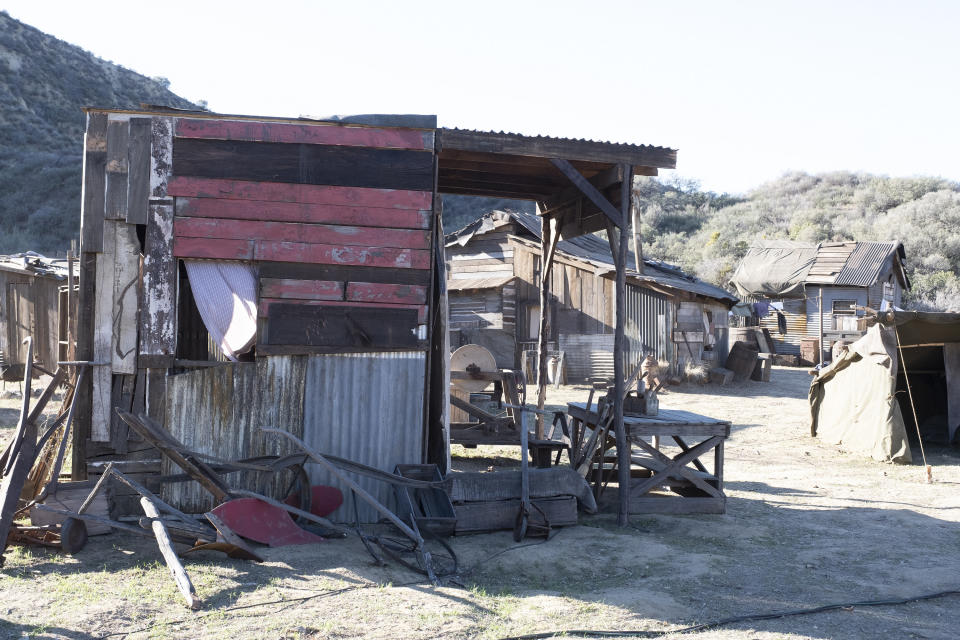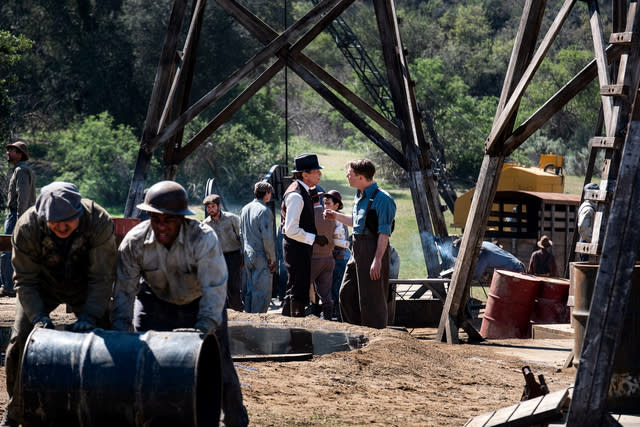Creating a ’30s-Era Skid Row for a New Season of ‘Perry Mason’

When production designer Keith Cunningham joined the second season of HBO’s “Perry Mason,” he was excited to lean into the depiction of economic inequity in ’30s Los Angeles that the series introduced in its first season. “A lot of this season is about really exploring the world of the haves and the have-nots,” Cunningham told IndieWire. “It was an incredibly diverse city in terms of the different cultures and economic levels, and it was growing and changing so fast that it was almost reinventing itself as it went along.”
Read More: How ‘Perry Mason’ Tweaks Its Cinematography for a New Season of Noirish Mysteries
More from IndieWire
House of Horrors: How 'Scream VI' Created Its Meta Ghostface Museum
'The Last of Us' Hits New Series-High Viewership Despite Finale Airing Against the Oscars
In the headings for his lookbook, Cunningham found himself using antonyms to describe the opposing worlds in which the series takes place — power and vulnerability, abundance and desperation, romance and danger, grit and glamour – and Season 2 beautifully conveyed these dichotomies within its production design. Even a location as prosaic as a grocery store comes to symbolize the city’s transformation and its effect on the less fortunate: “Convenience stores and bodegas were being replaced by supermarkets, large stores that had everything, so you didn’t have to go to five different places,” Cunningham said. “Settings like that illustrate the abundance and how the city is moving on and developing at a rapid pace but is also leaving behind a whole culture and population that can’t keep up.”
Perhaps the most evocative location in delineating the contrasts between the haves and have-nots of “Perry Mason” is the shantytown home of Mason’s new clients, accused murderers Rafael and Mattheo Gallardo. A labyrinth of makeshift shacks, the era’s hastily erected so-called “Hoovervilles” (named in honor of the president who presided over the start of the Great Depression) stood in stark contrast to the grandeur of upper-class settings — like the series’ murder victim Brooks McCutcheon or the imposing courtroom that serves as the focal point for most of the season. “The concept for Hooverville was created in juxtaposition against the majestic, classical courtroom,” Cunningham said. “When Perry ends up there, he sees how downtrodden his clients are compared to the circles of wealth he runs into.”

HBO
The stripped-down nature of the show’s Hooverville, in which everything is essential and serves a utilitarian purpose, adds to the class disparity when viewed alongside the scenes set among L.A.’s upper crust. “Scenes like the opening of the season on the gambling ship are all about excess,” Cunningham said, “and the upper class lives in more spatially structured spaces, while Hooverville is loose and rough and textural and labyrinthine.” That labyrinthine quality had a practical function as well as a thematic one, as it enabled directors to shoot areas of Hooverville from different angles to make it appear larger than it actually was.
The trick for Cunningham was emphasizing the disparities between the different communities of “Perry Mason” while maintaining a unified visual style for the series. “The interesting thing was to try to tie all these things together, so it didn’t just feel like a bunch of haphazard sets,” he said. One of the great pleasures of the show is spotting the subtle touches that tie the worlds together and serve as metaphors for the oppressive forces weighing down on the poor, like the oil derricks dappled throughout the mountainside that surrounds Hooverville. “They represent a sort of stranglehold or a wall,” Cunningham said. “Almost like the occupants of Hooverville have been cordoned off.”

Merrick Morton/HBO
It was important to Cunningham that the location not be merely grim but also expressive of the optimism and sense of family characteristic of many of the people who occupied it. “There is a sense of people trying to live the best they can,” he said. “We were trying to find a beauty in that and embrace the sense of hope of many of the people in the community.”
That visual grace is a continuation of Season 1 of “Perry Mason.” “One of the things we all respected and enjoyed about the first season is that there was a discipline and elegance, even in the grittiest moments,” Cunningham said. “It’s very subjective, but we’re always trying to walk that line and find the beauty in what the show is about.”
Best of IndieWire
Sign up for Indiewire's Newsletter. For the latest news, follow us on Facebook, Twitter, and Instagram.


